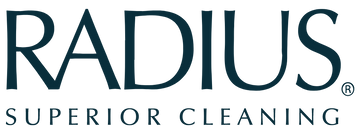
Proper dental hygiene is important to keep our teeth and gums healthy. Brushing regularly removes debris and surface stains, and prevents bacteria buildup that causes bad breath. It also ensures the removal of plaque, which is the primary cause of tooth decay, gum problems, and periodontal disease.
Although we’re all aware that brushing our teeth is an important part of our daily routine, some of us are still doing it wrong. Here are some of the common mistakes made when brushing teeth and how you can fix them:
1. BRUSHING YOUR TEETH QUICKLY
According to the American Dental Association (ADA), the average time most people spend brushing is 45 seconds. But it is recommended to brush your teeth twice a day for a full 2 minutes. If you want to be more consistent with this, try using your phone to set an alarm or play a song while you brush to guarantee that you are brushing for the right amount of time.
Take note that brushing your teeth more than the recommended time can also lead to sensitive teeth and receding gums. It may also damage your tooth enamel which is the hard, outer surface layer that helps fight against tooth decay.
2. USING AN OLD TOOTHBRUSH

Using a brush that is past its prime, is a no-no. You should replace it every 3-4 months because an old toothbrush with frayed and broken bristles won’t keep your teeth clean.
Most of us are aware that toothbrushes are one of the biggest contributors to plastic pollution, so if you want to lessen your waste, you can try using the Source Brush and the Tour Travel Brush from RADIUS. These sustainable toothbrushes have replacement head technology: you can just change worn brush heads with new ones without having to replace the entire brush. RADIUS toothbrushes also have 300% more bristles than your regular toothbrush, so you can use it for up to 9 months.
3. BRUSHING YOUR TEETH RIGHT AFTER MEALS

We all have that urge to brush our teeth right after every meal, but did you know that it’s not recommended to brush your teeth immediately after eating? Brushing too soon after a meal may lead to damage of the teeth enamel in its weakened state.
After eating or drinking, you should wait at least 60 minutes before brushing your teeth; especially if you’ve had something with sugar or carbohydrates. To help clean your mouth, you can drink water or chew sugarless gum while you are waiting to brush.
4. STORING YOUR TOOTHBRUSH IMPROPERLY

There’s a lot of toothbrush holders available in the market. But one thing is for sure: toothbrushes shouldn’t be placed in a closed container. Storing a moist toothbrush in a closed container will allow bacteria to grow.
Keep it in an upright position after use and allow them to air dry. You should also place your toothbrush holder away from the toilet because it creates a mist or aerosol of germs that are scattered throughout the bathroom. Look for a corner on your bathroom counter where you can keep the toothbrushes safe and within reach.
5. USING A TOOTHBRUSH WITH HARD BRISTLES

Toothbrushes with hard bristles won’t help you clean your teeth. In fact, it can even damage your gums and cause sensitive teeth. Hard and medium bristles push back the gum margins that expose tooth surfaces and may cause periodontal disease and cavities.
When it comes to brushing, choosing a toothbrush with soft bristles like the RADIUS Big Brush is your safest bet as it cleans your teeth without damaging the protective enamel. Our toothbrushes are filled with 8,824 vegetable-derived bristles that are softer than the average ones. They’re designed to be easy on the gums and to help reduce chronic bleeding, receding gums, and enamel erosion.

